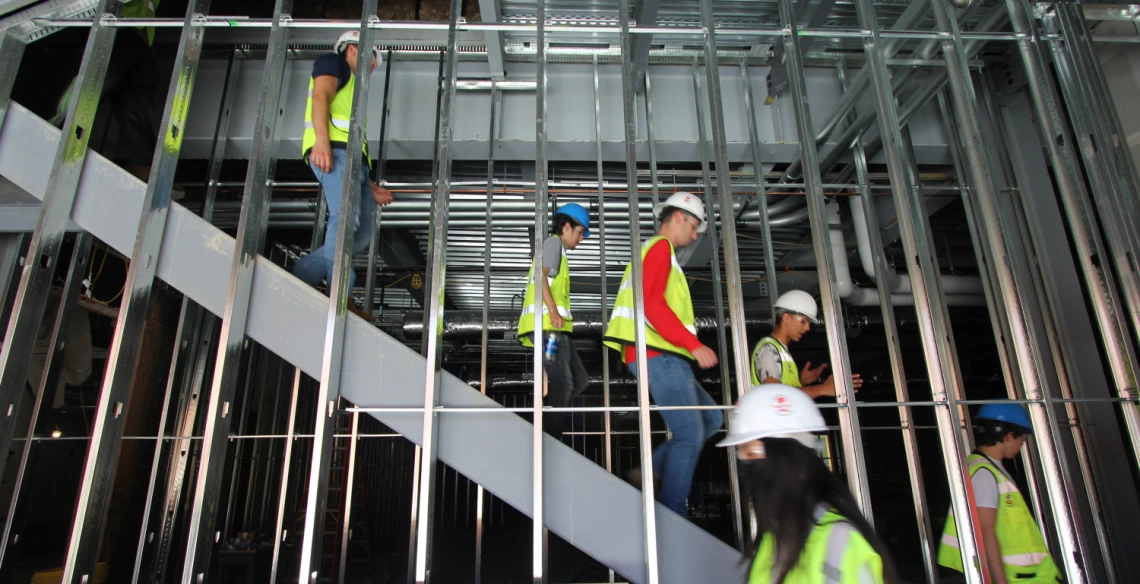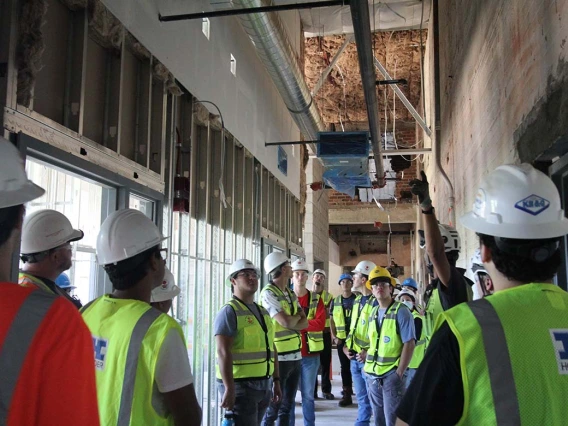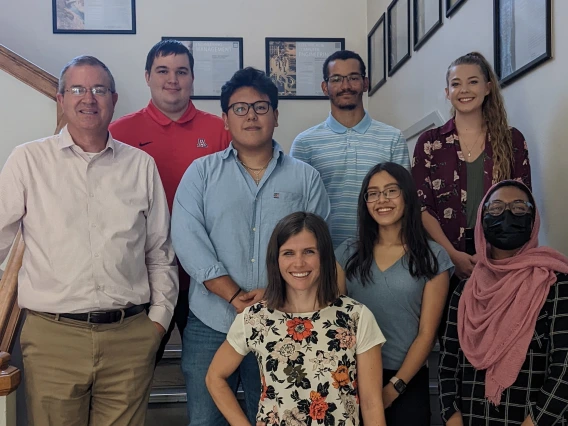Building Pathways Project Paves the Way for Future Civil Engineers
Funded with $500,000 from the National Science Foundation, the new program is designed to increase enrollment and support underrepresented students.

The new Building Pathways Program will provide cohort-based linked courses, peer mentorship, faculty interaction, internship opportunities and more to underrepresented students studying civil engineering. (Photo: Katy Smith)
Ilianna Juarez chose civil engineering because she wants to change the world.
On childhood trips to Mexico, she saw how the lack of infrastructure in some places made everyday tasks more difficult, and she decided she wanted to make them easier.
“A career in civil engineering would allow me to make both people and places more accessible,” she said. “The idea of a growing community brings me joy.”
The Building Pathways Program, which is designed to increase enrollment and support underrepresented students in the field of civil engineering, will provide cohort-based linked courses, peer mentorship, faculty interaction, internship opportunities and more to students like Juarez. The program is funded by a $500,000 grant from the National Science Foundation will be part of the college’s ENGineering Access, Greater Equity and Diversity program, or ENGAGED.
When civil engineering professors Kevin Lansey and Dean Papajohn heard about the NSF initiative, which is specifically for Hispanic-Serving Institutions like the University of Arizona, they decided to team up with ENGAGED Director Noel Hennessey.
“We brought together some of the programs already in existence with a little civil flavor and civil expertise,” Hennessey said. “Civil engineering is a degree pathway that’s well suited for an HSI because it’s got a real connection to local economy and to students who are more inclined to stay closer to family and to contribute to infrastructure.”
Lansey added that the program supports the college’s efforts to increase enrollment by aiding a wider range of students. Building Pathways is centered around three goals: promoting academic success, providing engineering students with a sense of community and belonging, and helping each student develop an engineering identity. The team hopes to enroll 25 students per year into the program.
Academic Success
Juarez has already benefited from ENGAGED, when she participated in the Catapult First-Year Experience, designed to provide students from underrepresented groups with a community as soon as they start their college careers.
“The best part about Catapult is knowing you aren’t alone,” said the first-generation college student. “It has been a life-changing experience that has opened so many doors for me.”
Summer Teaching Research and Career Knowledge, or Summer TRACK, another ENGAGED Program, assists students who want to take summer courses to stay “on track” with the engineering curriculum after their first year.
“Not only does it introduce students to careers and give them this up-close, front-row seat to what they’ll be doing as engineers in industry, but they also take foundational classes that help them ‘catch up,’ so to speak,” Hennessey said. “There’s not one time frame or way to get through a bachelor’s degree, but some students feel discouraged if they view themselves as ‘behind’ their peers. I’ve talked to students who said they wouldn’t have stayed in engineering if not for Summer TRACK.”
Community and Belonging
Building Pathways uses the proven ENGAGED cohort-based model, in which students take classes and engage in extracurricular activities with a consistent group of peers. Research shows that the resulting sense of community results in higher retention and a stronger sense of motivation and self-efficacy among participants. ENGAGED students report the same sentiment.
“The best part about Catapult is definitely the community you become a part of,” said Kaylee Kemp, a civil engineering major who also participated in Catapult. “You are surrounded by peers who have the same interests as you, and professors who are always available.”
Kemp added that a major-specific program like Building Pathways would offer even more opportunities to students who want to connect with faculty members, form peer relationships and start internships and extracurriculars.
An Engineering Identity
Another existing effort that will be integrated with, and expanded, as part of the Building Pathways Project, is the UA Beavers Heavy Construction Internship. Many companies seek out interns who have been in college for several years. However, in this effort, Papajohn helps students who are early in their college careers find internships.
“It helps students get a sense of what it is to be a civil engineer, to come back to school with a sense of excitement and motivation to persevere and perform well,” Papajohn said.
Thanks to the program, civil engineering student Sofia Iliev interned at Kraemer Construction in Colorado last summer. She learned a lot about logistics and standard procedures in heavy construction, but also spent about half of her time in the field, where she saw everything from a bridge deck pour to asphalt being paved.
“It was really cool to see and learn about why things are the way they are,” she said. “I’ve seen a deck being poured. All of the classes I am going to take to get my degree are going to be – forgive the pun – more concrete.”
Iliev has come a long way from her first semester, when she wasn’t sure what her engineering identity would be. The sophomore is now considering an emphasis in construction and will complete a second internship with Kraemer in summer 2023. In spring 2023, she competed in the Associated Schools of Construction Region 6 heavy civil competition as a member of the UA chapters of the Associated General Contractors and Design-Build Institute of America. In 2022, she also attended a Women in Construction and Engineering Leadership seminar hosted by Kiewit.
“I didn’t think I was going to dive headfirst into college, but all of this really helped me to do that, and I couldn’t be happier,” she said.



